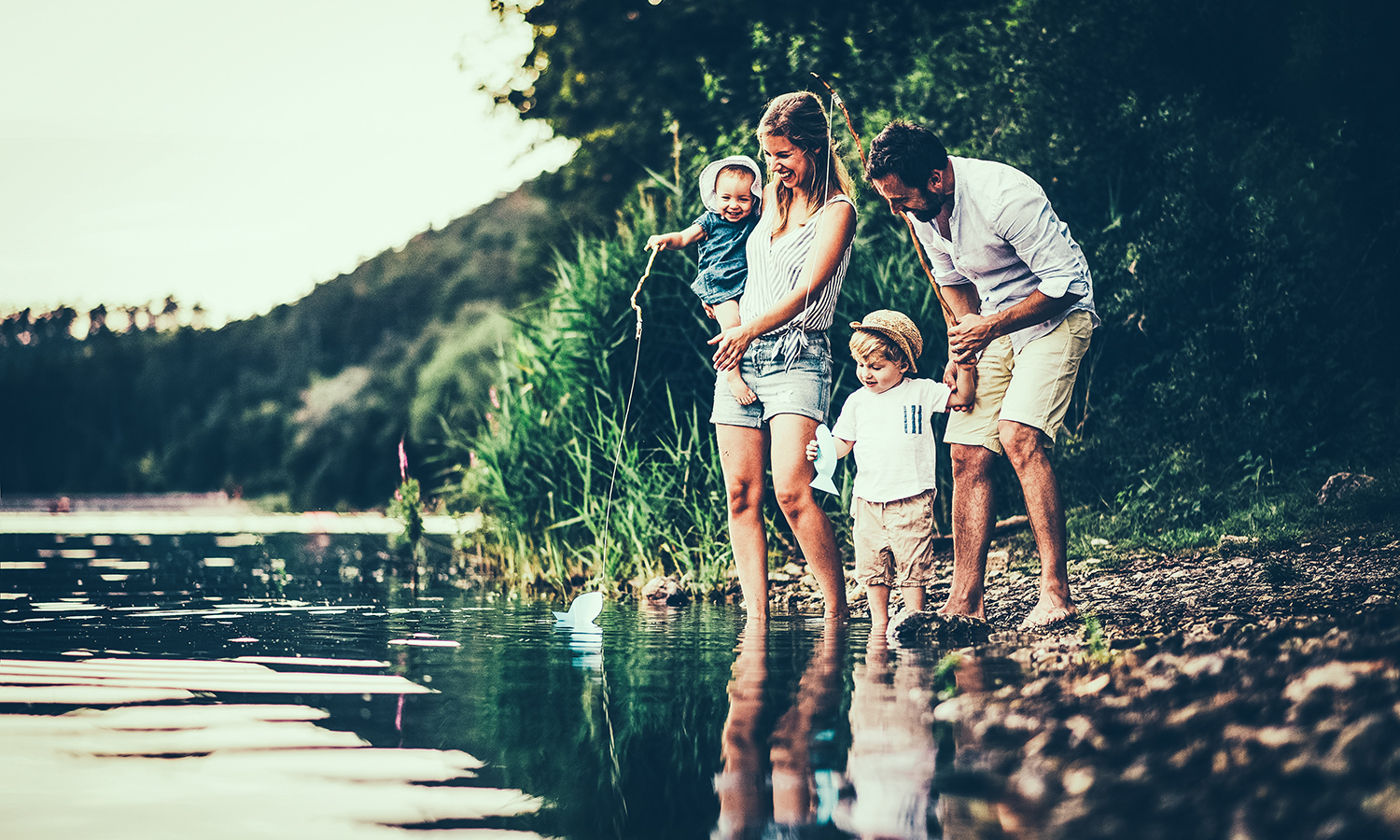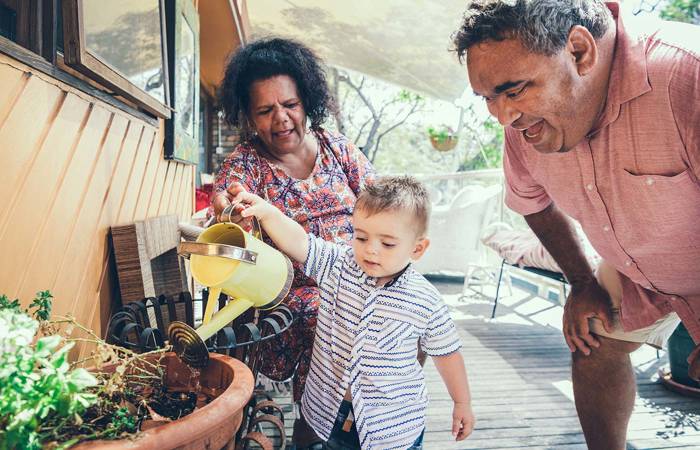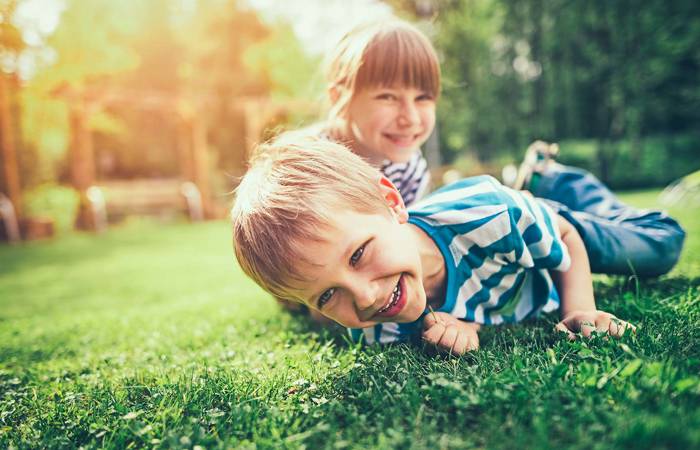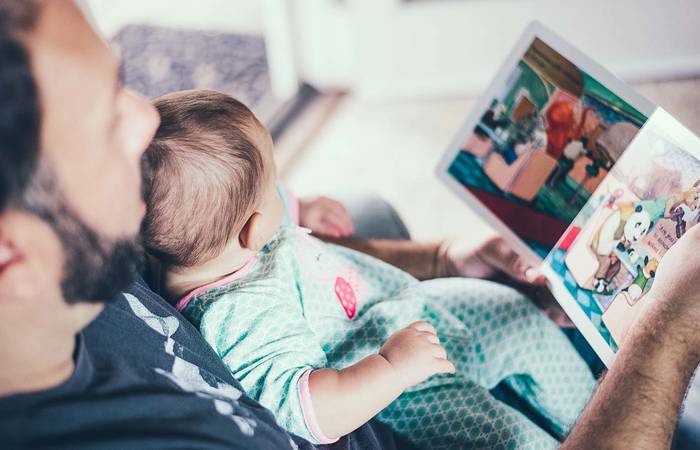Like what you see?
Sign up to receive more free parenting advice.
Thank you for subscribing to our newsletter!
Child Development

Credit: iStock.com/Halfpoint
Dr Justin Coulson is a three-time bestselling author, a TEDx speaker, and one of Australia's most popular relationships and parenting experts. In this article he looks at how not to just make children happy, but how to foster genuine wellbeing.
Ask any group of parents what they want most for their children – the answer will be the same.
“Happiness!”
But there are a couple of challenges we face with this answer. The first one is that it’s not particularly clear what we mean by happiness. We can have happy children by letting them play on the iPad all day, eat ice-cream for breakfast, not have to take a bath, or live life without any boundaries or limits. They’ll be VERY happy!
We know that’s not a good idea. Short-term happiness can sometimes have a cost: long-term pain. So perhaps happiness is not quite the right word.
There’s another challenge we face with that answer too. Much of what we do, much of what we say, and much of how we engage with our children leaves them feeling unhappy. We get impatient or cross, tell them to hurry up, and give lots of correction and direction, often without the connection they need to be truly happy and resilient.
If, however, we do want to have children who are balanced and well, there are five ingredients they each need in their lives consistently.
As parents, we have the ability to provide them with these five things.
Kids Need Strong Connections
Think about your morning with your child just today. How much connection did you enjoy together? As a proportion of your time with one another, how much was connection and how much was correction and direction?
For resilient, well-adjusted, happy children, our connections must be strong. Our relationships must be right.
Connection means that others feel seen, heard, and valued. Here are some simple ways that we can connect with our children:
When our child wants our attention, stop what you’re doing, look them in the eyes, and listen carefully.
Create little rituals together.
Maybe it’s the moments you both get together while driving in the car somewhere before or after school, or perhaps it is a snuggle and chat right before bed. It could even be as simple as preparing dinner together or bringing them along with you while you run a few (otherwise boring) errands. The key could be finding something you both enjoy doing and doing it together.
Carving out little moments of time in your day to spend solely with your child tells them that they are important and that they matter. Connection strengthens bonds. And even with multiple children, it is possible to do every day.
To a child, LOVE is spelled T-I-M-E. Take the time to connect.
Think about your morning with your child just today. How much connection did you enjoy together? As a proportion of your time with one another, how much was connection and how much was correction and direction?Dr Justin Coulson
Stay up to date with the latest news and articles from First Five Years
Thank you for subscribing to our newsletter!
Kids Need to Be Active
Our children usually love to be active. It’s how they’re wired. They typically relish the opportunity to actively explore, expand their skills and knowledge, and be creative. And research tells us that play – particularly outside play – creates more resilient children as they explore limits, master challenges, create, and navigate tricky social situations with others.
Peter Gray is a global play expert. He suggests that play is most potent for learning and development when it is active, and even a bit risky and adventurous. He says,
“If too little fear is induced, the activity is boring; if too much is induced, it becomes no longer play, but terror.”
While we would never go for terror, a bit of active play and risk is great! But often times the most common areas for families to spend time together within the home is the TV room or at the dining table during meals.
In a fascinating 2019 survey commissioned by Golden Circle, 500 Australian families answered questions about the way they spend time with their children in the great outdoors. Here’s what they found:
- 1 in 3 Aussie kids don’t spend time outdoors more than twice per week
- Aussie kids spend 5.5 hours outdoors each week on average, compared to 9.5 hours they spend each week watching screens; and
- 71 per cent of Aussie kids spend the equivalent of less than an hour a day outdoors
But here’s the kicker: 3 in 4 Aussie parents would like to spend more time outdoors with their families. Why? Because they know it’s great for healthy living, and for connection time. And more than 85 per cent of parents believe that spending time outdoors improves their kids’ mental and physical health too. And they’re right. The research shows that it improves parent-child communication, enhances mental health and improve overall health and wellbeing.
It’s about more green time and less screen time. It needn’t be too complicated, either. Something as simple as putting together a quick picnic and heading off for a drive to explore a local national park as a family, or perhaps going for a ride or a scoot together one weekend can have great and lasting impacts.
Kids Need to Slow Down and Take Notice
If a child spells LOVE T-I-M-E, what does “Hurry Up!” mean?
“Come on we have to go!”
“Hurry up, we are late!”
“Quickly now!”
We’re all so busy. All. The. Time.
But research tells us our children will be happy – and they’ll thrive – if we just go slow.
Society seems to place value and importance on doing all the things, but not as much on prioritising restful periods of quiet rejuvenation and down time. Slowing down is critical as well for parents - especially when it comes to grasping moments of connection with your child.
Our children don’t need extra tutoring, particularly when they’re young. They don’t need structured activities (with exceptions like swimming lessons). They need time to slow down and take notice of their world.
Slow down and take notice of what your child takes notice of when things slow down. On your next walk (where you’re being active and connecting!), take notice of how your child stops to look at flowers, grass, cracks, the sky, a bird, a stick, and everything else!
Take notice of your child’s smell (hopefully it’s a good one!), the colour of their eyes, and the delight in their smile. Then tell them what you noticed.
Kids Need to Keep Learning
Our children are learning machines! Have you ever said a “naughty word” and discovered how quickly they’ve learned that word from you? Have you noticed how eager they are to do things on their own, to learn independence, to be ‘grown-up’ and ‘big’?
Researchers have discovered that we build happiness and wellbeing as we grow our competence and mastery. Learning and development happen naturally in our young children. But we can help them to learn what matters most by providing them with an enriching environment where they:
- Have lots of non-screen activities to explore, like Lego or other things to build and construct
- Have plenty of outdoor playtime in natural environments (rather than pre-fabricated plastic and steel ones)
- Have lots of social interaction with same-age and older peers as well as adults who care for them
- Have lots of conversations about their day, their learnings, their relationships, and their interests with the caring grown-ups in their lives
- Have lots and LOTS of books to devour alone and with parents who read to them
Kids Need to Learn to Give
One of the most important things we can teach our children is to be kind to others, always. Research has shown that children who show kindness to others experience greater levels of happiness themselves. There is also evidence that being kind and giving to others can actually be relaxing for people who struggle with anxiety. How we as parents show kindness to others sets a precedent for our children.
This might mean we take the time on the phone to support a friend who is struggling; perhaps we may make a stack of meals to give to an elderly family member or neighbor; or perhaps we might donate to a worthy charity of our choosing.
Finding a way to make a difference in another’s life helps children to feel grateful for what they have, feel a part of something larger than self, and sense that they can make a difference in the world.
When we as parents take the time to connect with our children, be active as a family, slow down and take notice of the small things, give our children enriching opportunities to learn, and model kindness and giving to others, we increase the likelihood that they will be happy – in the short term, and in the long term. We set them up for successful lives in all the ways that matter most.








